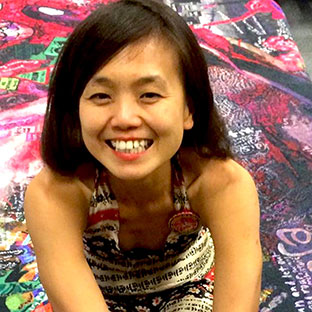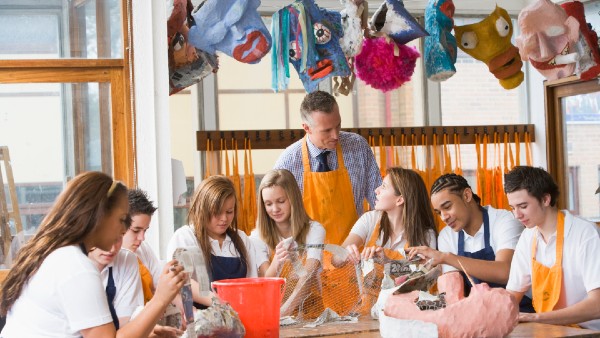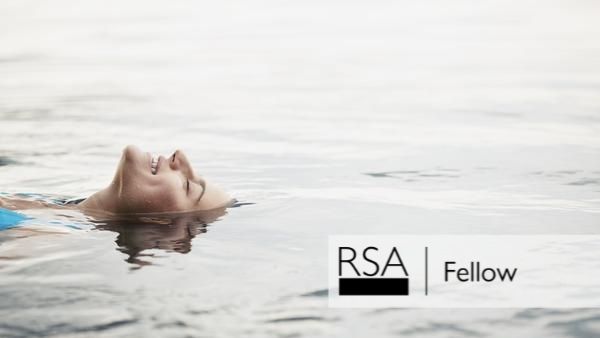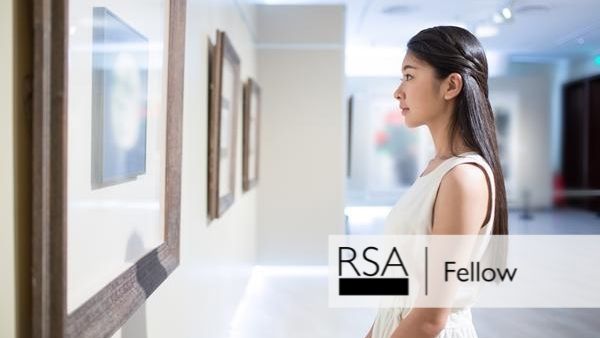Kai Syng Tan FRSA argues that we need atypical thinkers, agile doers and creative problem-solvers who thrive in the context of unknowns and that artists should be embedded in multidisciplinary teams to co-create bold exit strategies and to curate new visions.
The Covid-19 virus strain is not our enemy; our lack of vision is what works against us. We turned a blind eye to the 600-page report that warned of a virus that would cost 65,600 lives and £2.35 trillion. We looked the other way when it hit Asia, declaring a ‘pandemic’ only when white bodies fell. We watch from the sidelines as Trump and Bolsonaro scorn science and sensibility, and deepen social injustices and inequalities.
But we have seen it all before. We had already stood by, watching the morally-vacant, misogynistic and racist become leaders. We watched them vacation while biblical bushfires ravaged, mock women and children protest against sexism and climate change, proclaim that they have ‘had enough of experts’, and celebrate the end of the freedom of movement. If what some of our political leaders did was short-sighted, we are complicit. We did not do enough, and take some responsibility for what is unfolding now.
Each one of us must act now. I am calling for artists to be enlisted to collaborate with scientists, economists, politicians and humanities scholars to counter the unprecedented social, economic and mental health fallout brought about by a novel coronavirus. We need novel insights and artful solutions as part of a holistic community of efforts, bringing in atypical thinkers, adaptable and nimble doers and creative problem-solvers who are used to and thrive in contexts that are complex and new. Artists, especially those with ‘non-standard’ cognitive approaches like dyslexia, Attention Deficit Hyperactivity Disorder (ADHD), dyscalculia and more, can ask new questions and help invent new solutions. These artists must be mobilised as part of multi-disciplinary teams to co-create artful pathways to change culture, rectify our collective failures, overturn the human-made disaster, curate meaningful exit strategies and realise bold visions.
We know that novel, multidisciplinary and interdisciplinary approaches are needed to solve global challenges. The former President of the Faculty of Public Health John Ashton argues that the UK response to Covid-19 is ‘flawed’. The crisis, he argues, “cannot be sorted by three men in London telling people what to do. It’s got to be social mobilisation by people”. Ashton calls for multidisciplinary, 360-degree science, not just biological science, as well as the community engagement. As this is about culture change, the community must take a lead.
Germany has recruited philosophers, historians and theologians to advise the government. France’s 11-person scientific council includes a sociologist and an anthropologist. But all are missing a trick because we have forgotten the critical role of creativity, judgment and intellectual agility. This is especially in the face of Industry 4.0, and in the face of novel viruses and other unusual challenges to come.
Virologist Elisabetta Gropelli calls the virus “clever” because it hijacks the human body to transport itself to other bodies. If the game is changed, old tricks and rulebooks are useless.
We need new compasses, fresh tools, and untried directions. As pointed out in another RSA blog post, ‘neurodiversity is driving innovation from unexpected places’. We must invent artful ways forward. We know that Richard Branson’s dyslexia and Silicon Valley’s overwhelmingly autistic workforce are key to their successes. Yet, we have not tapped onto neurodiversity as a unique human resource. It is only recently that the World Economic Forum and Nesta are finally realising the potential of alternative cognitive approaches in the ecosystem, and are calling for neurodiversity as the ‘next talent opportunity’ to ‘enhance innovation’ and counter AI.
It is not a coincidence that neurodiverse processes like dyslexia is common amongst people in art and design, at 30% compared to 5-10% of those in other sectors. Research is emerging on how behaviours like risk-taking, courage, out-of-the-box thinking, craving for knowledge and giftedness are common in those who are ‘non-neurotypical’. These are also unmistakable traits of leadership. Artful leadership by neurodiverse artists can add tremendous value to society.
And if this is a systemic crisis, we must imagine new systems and scenarios. Artists have always crafted novel scenarios and worlds that illuminate what, whom and where we are. Computer gamers are skilled in multiple scenario planning, but artists take this further by giving form, coherence and direction to unknowns. Using and mis-using words, sounds, colours, materials, movement, other people and ideas, designer-activist William Morris’ utopian News from Nowhere and Yayoi Kusama’s nightmarish The Spirit of the Pumpkins Descended into the Heavens make us see ourselves anew. Leonardo Da Vinci’s ADHD meant that he was an insatiable and fearless explorer. Apart from painting, he invented the revolving bridge, diving equipment, parachute and helicopter. Leonardo reveals the fragilities and limitation of the human body, but demonstrates the agility of the mind. He teaches us where our imagination can take us, and gives us the permission to dream. This ability to envisage is powerful. Why else were Franco, Mao and Pol Pot anti-intellectual and anti-art? And art is survival. As an artist friend cries, why else did cavemen and women make drawings?
Art is no panacea. Artists ask questions instead of providing answers. At its most crafty, art can confuse and bemuse. Art by neurodivergent artist interrogate neuro-normative assumptions and disrupt the status quo. It is especially when resources are scarce, minds are closed, news are faked, and people more tribal, art must lead new dialogues, and be embedded within the ecosystem to advance knowledge and improve civilization.
This is why the UN asked for artists to lead its Covid-19 communications campaign. This is why, despite being furloughed or having to use food banks, artists are sharing shrewd ways to combat mental ill health during quarantine. This is why Hans-Ulrich Obrist of the Serpentine Gallery and others want the UK government to invest in an ambitious multimillion-pound public art project to support cultural institutions now, and to nurture a new generation of artists, like Franklin D. Roosevelt’s did with the Public Works of Art Project during the Great Depression. This is why artist-activist Bob and Roberta Smith, who champion art as a human right, declares artists as ‘keyworkers’. Making art is about ‘organising, drawing and putting things together while thinking about the future. Paul Klee said art was the “life force”. So let us be artful and catalyse the crisis to co-create new visions. Let us recruit neurodivergent artists and capitalise on their gift to see, think, make and do things in atypical ways. Let’s co-create meaningful exit strategies and curate new, alternative social and creative realities together.
Kai is an artist-curator and academic whose pioneering work in mental health and culture change through creative collaboration has been covered widely. She founded and co-leads the Neurodiversity In/& Creative Research Network and is a trustee, consultant, co-leader or member of 15 networks and organisations in research, arts, health, and human rights. These are her own views.
Related articles
-
Artificial intelligence: the creative edge
Alex Soulsby
How should schools respond to AI? Alex Soulsby calls for a greater focus on the arts to help students develop their creativity, critical thinking, adaptability and emotional intelligence.
-
The magic of the ocean
Fiann Paul
The oceans are the least accessible and most mysterious regions on Earth, and humankind has a deep and eons-old relationship with the sea. Fiann Paul, FRSA, selects five stunning animated films that explore this emotional, almost mystical, bond, and warns that we abuse the oceans at our peril
-
Curating Tomorrow
Henry McGhie
Museums curating consultant Henry McGhie asks how museums and other cultural institutions can support people’s participation in climate action and sustainable development?




Join the discussion
Comments
Please login to post a comment or reply
Don't have an account? Click here to register.
I first went to university after school in the sciences, returned much later to the social sciences, and travelled through the humanities to my current PhD in the arts. I've never wanted to lose touch with what went before, as one informs the others. As you say, we need more of this connection - that it becomes almost a natural way of working and being, instead of something marginal.
That's a fabulous trajectory! And absolutely 'natural' - skills and curiosity and knowledges defy boundaries. The most exciting thinkers and doers and makers - at RSA and Centre of Mobilities Research CEMORE for instance - are such compulsive trespassers. It's great that UCL's BASc and London Interdisciplinary School for instance are offering art-science degrees with a focus on solving real problems. Harari says that ethics and philosophy should to be a compulsory module for computer science students. Artist Bob and Roberta Smith call for a 'Leonardo subject' to be taught at primary schools that marry art and science. We need to do more. Thank you Tess.